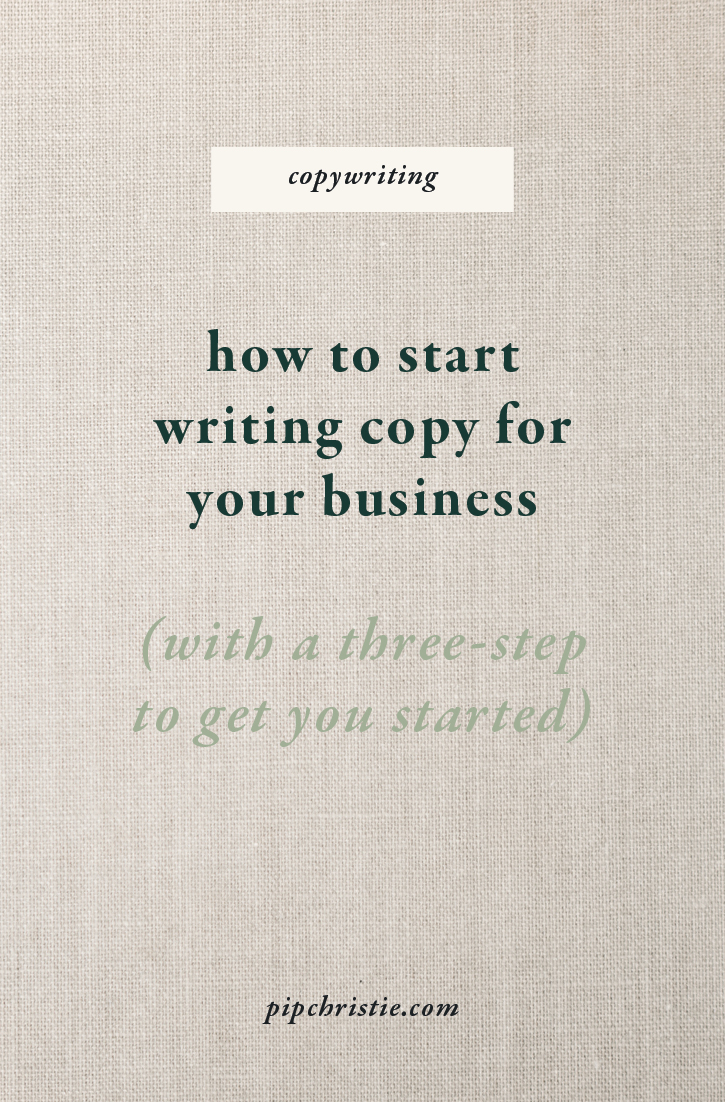What is copywriting? The difference between writing and copywriting
There’s writing, and then there’s copywriting. The same thing, write right? Umm, no. Not really. Often confused with content writing, most folks assume that copywriting is simply writing for a business.
Yes and no. Copywriting does involve writing for businesses, but not all business writing is copywriting. So, what is copywriting?

What is copywriting?
Copywriting is writing for persuasion, as the writer works to take the reader from point A to point B. Copywriting involves strategy, psychology, marketing methods and consumer insights to guide the reader towards taking action on a specific goal.
Although the term copywriting is often used interchangeably with content writing, they’re actually pretty different. Content writing is writing educational content such as blog posts, email newsletters and social content, all designed to be consumed and add value to the reader’s life. Whereas copywriting is about showing the value of an offer and, ultimately, getting the reader to convert or take action on that offer.
How to use copywriting in your small business
There are two ways to start using copywriting in your small business. You can DIY it, and write the copy yourself. Or, you can hire a professional copywriter to write it for you.
Which way is best? A professional copywriter is going to bring external insights and their own set of expertise, which will ultimately get you the best results in the least amount of time (without you having to spend hours figuring it all out for yourself).
But, sometimes the small business budget just says no. If you’re just starting out, it may be that you’re going to have to DIY it at first and then invest later
And that’s okay.
Or, you might be able to do something in the middle, and hire a professional copywriter to edit your copy or help you create your key messages.
If you are investing in a professional copywriter, be sure to ask them about their copywriting process. It should go something like this…
(Spoiler alert: it’s not all about writing)
The Copywriting Process
The listening bit
Good copywriting means knowing who you’re talking to. That old saying “if you’re talking to everyone, you’re talking to no-one”? There’s a reason you hear it repeated everywhere.
If your copy is going to be effective, it needs to be focused. What might resonate with one person (e.g. you, the writer) isn’t always going to resonate with someone else (e.g. your customer). Which means that you’re going to have to ditch those comfy slippers and walk in your customer’s shoes for a little while.
Purposeful copywriting involves knowing:
- Who your customer/audience is
- What will resonate with them
- What they’re looking for
- What will persuade them
- How you can persuade them (what language and messaging you’ll need to use)
How do you find this out? You listen to your audience. You look at what they’re saying in feedback, reviews and messages. You note down the language or keywords that they’re including in their comments on your Instagram posts. You save those replies to your weekly newsletter.
And you talk to them. You ask them questions, build up a rapport and research what they’re saying elsewhere online.
Take the time to get to know your audience, and you’ll find the copywriting process a lot easier and a lot more impactful.
The writing bit
Okay phewph, we’re onto the writing bit. Finally!
But hold up a second. Before we can start writing, we need to outline.
You’re going to want to structure each piece of copy and each page before you start writing. We need to meet the reader where they currently are, and then take them to where we want them to be.
Which means setting a goal. What do you want your copywriting to achieve? What action do you want your readers to take?
Set the goal for your copywriting and then build the structure from that. The structure will depend on many many different factors but will often follow a copywriting methodology or formula.
Then, popular your structure with your key messages and (at last!) the copy itself.
The editing bit
This is one of my favourite phases of the copywriting process and yet, I feel it’s often forgotten about.
Perhaps that’s why I like it so much…
Anyhow, the edit. This is where you tweak, review and improve your copy.
Once you’ve written your copy, let it sit (my Behind the Business newsletter subscribers know that I’m a big fan of “sleeping on the job”!). While you’re welcome to have a quick scan through of your copy after you’ve written it, it’s always better to come back and review it with fresh eyes. Give it time to breathe (and yourself time to rest).
Then, when you’re ready to come back to your copy a day or so later, you’re going to see it in a different light. You’ll likely have new ideas, spot mistakes you would’ve otherwise missed, and be able to detach yourself from it too. Remember, we’re walking in the customer’s shoes here.
As you look through your copy, ask yourself “is the message clear?”. This is the big one. Fun, quirky copy can be great but only if that message is still clear. Does it persuade? Is it compelling to the reader? Slip into your customer’s shoes and forget everything else you already know about your business. With what’s on the page (and that alone), is it enough?
Then, it’s onto the more fiddly bits. Check your grammar (obvious but oh-so-important), ensure that your writing flows, and check that your writing style is consistent with your brand’s style and tone of voice.
Once you’ve gone through all of that, you can breathe and relax. You’ve done it!
And that is, a slightly simplified, round-up of what copywriting is and how to go about writing copy for your own business. Best of luck!
Write your website copy like a pro copywriter (without the pro price tag)
Introducing... the about page roadmap.
You’ll get access to the same copywriting framework I use with my small business clients. So you can have an about page that feels 100% you.



